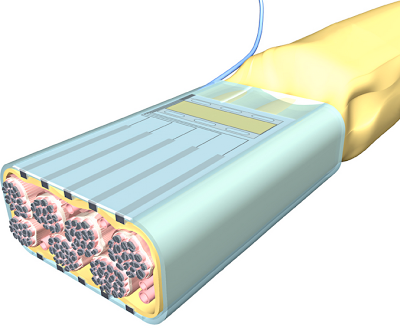A team of researchers at the Rehabilitation Institute of Chicago (RIC) demonstrated a type of peripheral interface called targeted muscle re-innervation (TMR). By rewiring nerves from amputated limbs, new interfaces allow for prosthetic control with existing muscles. Former Army Staff Sgt. Glen Lehman, injured in Iraq, recently demonstrated improved TMR technology. In the following video, Lehman demonstrates simultaneous joint control of a prosthetic arm made possible by support from the RE-NET program.
“Although the current generation of brain, or cortical, interfaces have been used to control many degrees of freedom in an advanced prosthesis, researchers are still working on improving their long-term viability and performance,” said Jack Judy, DARPA program manager. “The novel peripheral interfaces developed under RE-NET are approaching the level of control demonstrated by cortical interfaces and have better biotic and abiotic performance and reliability. Because implanting them is a lower risk and less invasive procedure, peripheral interfaces offer greater potential than penetrating cortical electrodes for near-term treatment of amputees. RE-NET program advances are already being made available to injured warfighters in clinical settings.”
Artist’s concept of a flat interface nerve electrode (FINE)
If you liked this article, please give it a quick review on ycombinator or StumbleUpon. Thanks

Brian Wang is a Futurist Thought Leader and a popular Science blogger with 1 million readers per month. His blog Nextbigfuture.com is ranked #1 Science News Blog. It covers many disruptive technology and trends including Space, Robotics, Artificial Intelligence, Medicine, Anti-aging Biotechnology, and Nanotechnology.
Known for identifying cutting edge technologies, he is currently a Co-Founder of a startup and fundraiser for high potential early-stage companies. He is the Head of Research for Allocations for deep technology investments and an Angel Investor at Space Angels.
A frequent speaker at corporations, he has been a TEDx speaker, a Singularity University speaker and guest at numerous interviews for radio and podcasts. He is open to public speaking and advising engagements.


